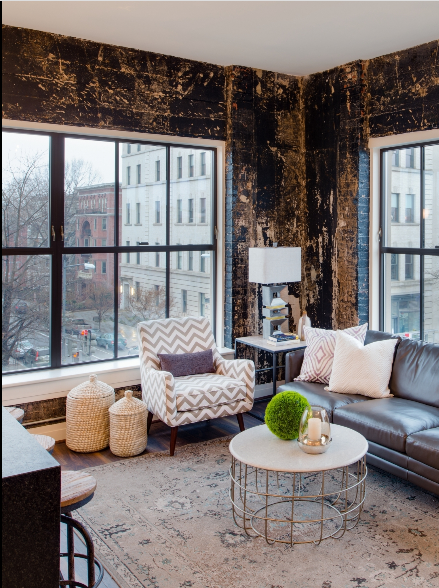When it comes to interior design, one term you will often hear is “contrast.” But what does contrast really mean in this context, and how can it help you create stunning spaces? Drawing from my own experience, I’ve come to realize that contrast is not just about color; it is a holistic approach that touches on texture, shape, and style. In this comprehensive guide, we will explore the multifaceted role of contrast in interior design, giving you the tools to elevate your home.
Understanding Contrast in Interior Design
At its core, contrast refers to the differences and juxtapositions between elements. It can be achieved through varying colors, textures, patterns, and sizes. Whether you want to create a cozy atmosphere or a bold statement, contrast is essential to achieving balance and visual interest in any space.
Types of Contrast in Interior Design
- Color Contrast: Using contrasting colors to create visual excitement.
- Texture Contrast: Combining different materials to enhance tactile experiences.
- Shape Contrast: Balancing geometric and organic shapes to create harmony.
- Style Contrast: Mixing different design styles for an eclectic look.
The Role of Color Contrast
Color is one of the most powerful tools in interior design, dramatically affecting mood and perception. Understanding color theory can dramatically improve your design choices.
Color Wheel Basics
The color wheel is a handy tool that helps you understand how colors interact. Here are key relationships:
- Complementary Colors: Colors directly opposite on the color wheel (e.g., blue and orange) work well together.
- Analogous Colors: Colors that are next to each other (e.g., yellow, yellow-orange, and orange) create a more harmonious look.
- Triadic Colors: Three colors evenly spaced on the color wheel (e.g., red, blue, yellow) can create vibrancy.

Creating a Color Contrast Chart
| Color Combination | Effect |
|---|---|
| Black and White | Timeless elegance and sophistication |
| Blue and Orange | Vibrant energy and freshness |
| Grey and Yellow | Modern and uplifting |
Texture Contrast: Adding Depth and Interest
Incorporating various textures adds dimension to any room. Mixing materials like wood, glass, metal, and fabric can create an inviting atmosphere.

Examples of Textural Contrast
- Soft Fabrics vs. Hard Surfaces: Pairing plush cushions with a sleek metal coffee table.
- Natural Elements vs. Man-Made: Combining a rustic wood dining table with modern acrylic chairs.
Pros and Cons of Texture Contrast
| Pros | Cons |
|---|---|
| Adds depth and interest | Can become overwhelming if not balanced |
| Enhances tactile experiences | May require more maintenance |

Shape Contrast: Balance Through Geometry
Contrasting shapes—round vs. square, organic vs. geometric—helps to break the monotony and create focal points within the design.
Creating Visual Flow with Shapes
For instance, in a living room, a round coffee table can soften the angular lines of a sectional sofa, creating a balanced yet dynamic look.

Using Shape Contrast Effectively
- Incorporate various shapes through furniture and decor.
- Consider architectural features like arches alongside straight lines.
Style Contrast: A Touch of Eclecticism
Blending different styles can showcase your personality and keep your design fresh. It’s essential to do this thoughtfully to maintain cohesion.

Combining Different Styles
A modern lamp can look stunning against a vintage side table. The key is to find common threads, such as color palettes or materials, that tie elements together.
Tips for Mixing Styles
- Stick to a cohesive color palette.
- Use a consistent element, like a material or pattern.
- Limit the number of styles to three to avoid chaos.

Conclusion: The Art of Contrast in Interior Design
Incorporating contrast into your interior design isn’t just about aesthetics; it creates a dynamic environment that can influence your mood and well-being. From color to texture, shape, and style, contrast serves as a guiding principle in achieving balance and interest in your spaces.
FAQs About Contrast in Interior Design
What is contrast in design?
Contrast in design refers to the differences between elements, such as color, texture, and shape, which creates visual interest and balance.

Why is contrast important in interior design?
Contrast enhances the aesthetic appeal of a space, contributes to emotional engagement, and can guide focus towards design features.
How can I effectively use contrast in my home?
Begin by identifying focal points in each room and then select contrasting elements to highlight those features, keeping balance in mind.
Is it bad to use too much contrast?
While contrast is essential, too much can create chaos. Aim for harmony and balance by strategically mixing contrasting elements.
Can contrast work with any design style?
Absolutely! Whether you prefer modern, traditional, or eclectic designs, contrast enhances the visual story of your space.
Final Thoughts
As you embark on your interior design journey, remember that contrast is your ally. It’s about finding a balance that resonates with your personality and lifestyle. I encourage you to experiment, trust your instincts, and most importantly, enjoy the creative process!